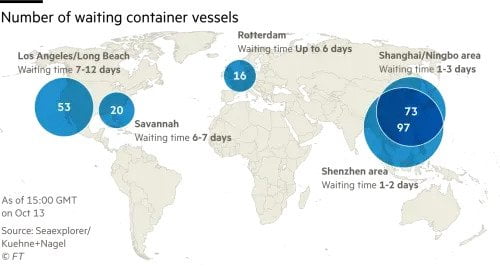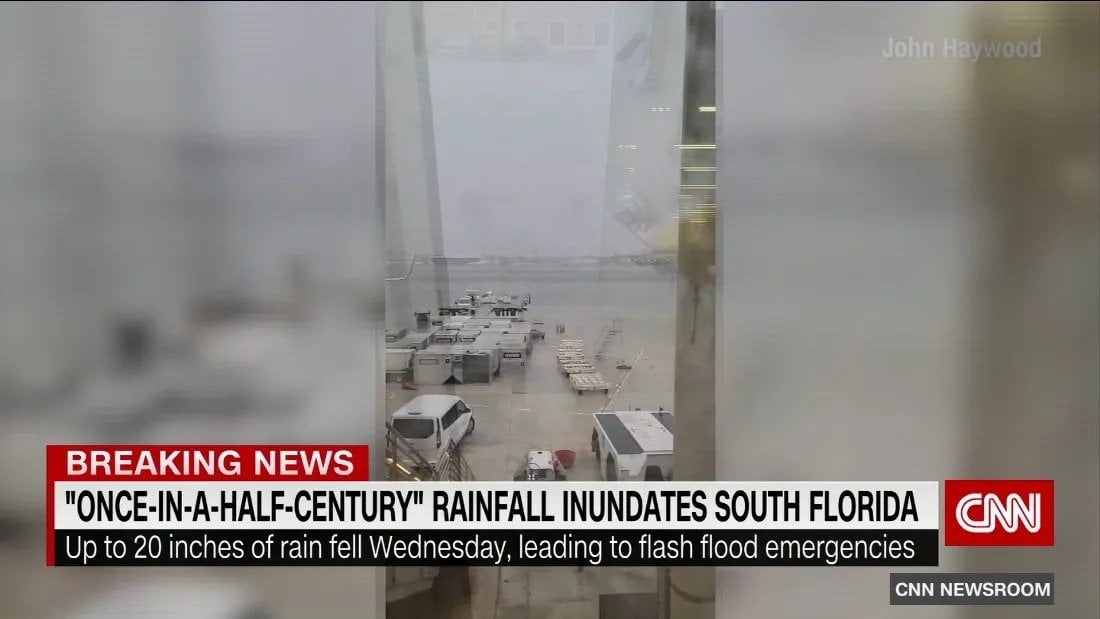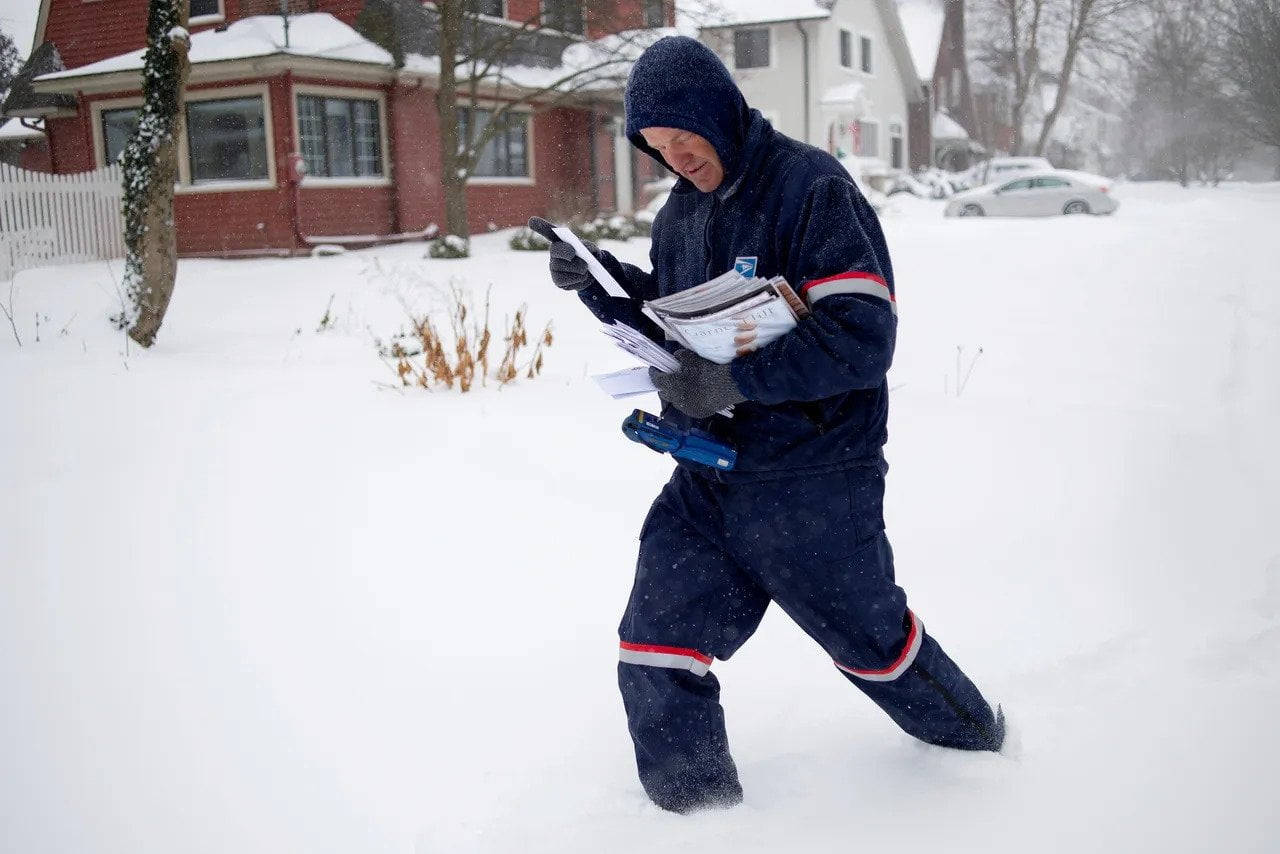
The Waiting Game: Where are the world’s worst port delays?
From Shenzhen to Los Angeles, storms, Covid and labor shortages are causing disruption.
The nearly 100 ships waiting on the horizon to berth at the Hong Kong and Shenzhen container ports are just the latest sign of the problems to have snarled global supply chains, pushed up consumer prices in Europe and the US, and led to shortages of goods ranging from Christmas toys to furniture.
A similar pattern is true for ports on the west coast of the US. Although the number of ships waiting at sea has fallen from a record 76 in September to 57 now, shortages of port workers and truckers means it takes up to 12 days for ships to drop anchor and unload containers, delaying the delivery of everything from sneakers to tropical fruits and Lego.
That is why it takes three times longer compared with pre-pandemic times to clear vessels at Los Angeles and Long Beach. By contrast at large Chinese ports, which work 24 hours a day, seven days a week, it only takes 20 per cent longer, according to IHS Markit’s port performance program, an industry data set.
The problem is so severe that US President Joe Biden has been pushing rail freight companies, trucking groups and ports to increase their capacity. Large businesses including Walmart and UPS have meanwhile pledged to step up their efforts to move goods.
Yet even when problems start to ease, Lars Jensen, a container shipping analyst at Vespucci Maritime, said that port bottlenecks will still come in fits and starts everywhere, as delayed vessels try to dock all at once.
“Nobody should expect this to be a gradual and smooth transition,” he said. “You’re going to have these back and forth ripples that will take a while to get out of the system.”





